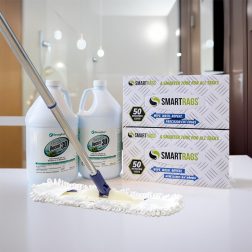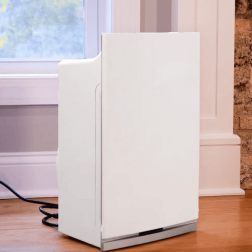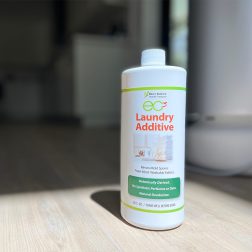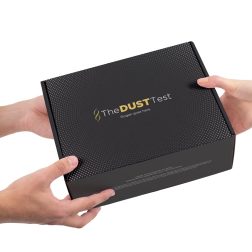No products in the cart.
Mold Resources
Knowing how to remove mold from a ceiling is a great way to ensure you’re not dealing with unwanted exposures and keep your indoor environment and air quality safe.
Why Is There Mold on the Ceiling?
Since we can’t put a bubble around our homes, it’s inevitable that spores will make their way into these spaces in some way, shape, or form. They could blow right in through the front door, get brought in on clothing, or get tracked in by a pet. That said, they’ll remain particles unless they land on a habitable surface, which could just be the ceiling.
The ceiling material is made up of organic material, meaning that it can act as a food source for a mold colony. Add on the wood framing, insulation, and random organic particles, and this sustenance requirement can be easily checked off.
That leaves us with moisture. High humidity, leaks, poor insulation, or other moisture-related events can lead to water on these surfaces. Microbial growth can easily develop if water remains on this surface for 24-48 hours.
Knowing how to remove mold from a ceiling will ensure that your indoor space remains safe should this contamination situation occur.
How to Remove Mold from a Ceiling
How to remove mold from a ceiling tip #1: Do NOT just throw some bleach on it because that will not solve your contamination issue. The best route is to hire professionals to come in and resolve the problem. Because of the porosity of the ceiling material and its ability to grow behind the surface onto the foundation of the home, successful remediation is difficult.
To handle the problem effectively, all of the contamination must be removed so that exposure does not continue. That includes the roots that grew into the ceiling surface, spores, fragments, mycotoxins, and bacteria. Porous materials like drywall and insulation, for example, should be removed and replaced because it’s impossible to get all of the contamination off the surface.
It’s also difficult to determine the extent of the contamination. How deep does the contamination go? Has it led to other issues developing elsewhere in the home?
Hiring professionals will help ensure that your home becomes a safe space once again and that the contamination situation is fully handled.
How to Remove Mold from a Ceiling Yourself
If you want to attempt a remediation project, proceed cautiously and only work on areas under 10 square feet. Contacting an expert beforehand can give you a full breakdown of how to address the issue properly.
Things to keep in mind:
- Use correct engineering controls and put PPE in place
- The source that led to the growth needs to be resolved
- All porous materials, like drywall, need to be removed and replaced
- All surfaces need to be decontaminated using the proper remediation protocols based on the specific surface type
- The surrounding space should be deeply cleaned to remove any particles released by the active growth
Once your finished and you've deep cleaned the home multiple times, test the space with The Dust Test to ensure the contamination has been successfully removed.
If you aren’t confident that you can tick off each box, the professional route is the way to ensure all the contamination is removed.
Showing the single result
Showing all 3 results
-

HomeCleanse Cleaning
Take your cleaning to the next level buying all the tools we use to keep...
-
$299.00 – $549.00 SHOP NOW -
Sale

Intellipure Compact Air Purifier
Small in size, but delivers powerful results, reducing airborne microorganisms like mold, viruses, and bacteria.
-
Original price was: $549.00.$199.00Current price is: $199.00. SHOP NOW -

EC3 Laundry Additive
Add EC3 to every rinse cycle to rinse away mold, bacteria and musty odors from...
-
$23.00 SHOP NOW
Still Have Questions?
A member of our team is here to help! Click on “Get Started ➤” below to book a consultation with a member of the HOMECLEANSE team. We have a few quick questions that will help us put together a roadmap to solve or prevent all of your mold problems.
Two minutes of your time could lead to better health for you and your family.

